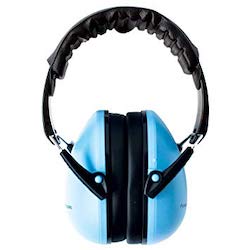Your Cart is Empty
Save up to 20% on all Harkla products & courses during Autism Acceptance Month! Click Here to See the Sale

The STAR institute estimates, based on their research, that 75% of children with autism have “significant symptoms of sensory processing disorder.”
Given that high correlation and comorbidity rate, our Harkla blog articles focus on bringing you the resources and information to take a closer look at how sensory processing disorder manifests in your child with autism and how to support sensory processing to help him/her make sense of it all.
For people with autism, the sensory processing dysfunction can manifest in language delays or deficits, fine and gross motor delays, strong sensory interests, sensory aversions, an inability to interact with people and objects, an inability to stay within an interaction, repetitive sensory stereotypies (stimming), and much more.
A child who presents with an over-responsive type of sensory processing disorderhas a low threshold for sensory stimuli - meaning, it doesn’t take much for him to be overwhelmed, overstimulated, irritated, or avoidant. This child is very sensitive to sensory stimuli. This oversensitivity or over-responsivity to sensory input limits the child’s willingness to play, explore, and feel safe or comfortable in his environment.
This over-responsivity can be referred to as “sensory defensiveness” because the child often defends himself (emotional or behavioral response), avoids, or tries to minimize the exposure to these sensations. Sensory defensiveness can be seen in any or all sensory systems and the child will avoid or become irritated by sensations, eliciting a physiological response that is referred to as “fight, fright, flight.”
For some children, sensory aversions are specific to one area of sensory input. Whereas a child who seeks oral input may lick or mouth non-food objects constantly, a child who avoids oral input may eat a very limited diet of certain textures.
When a child is over-responsive or defensive to auditory input, he may avoid loud, crowded spaces, cover his ears at loud noises like the vacuum or toilet flushing, or startle at unexpected sounds. These children overreact to auditory information and it contributes to difficulties with self-regulation.
Auditory sensitivities can lead to sensory overstimulation and even sensory overload. This makes it a necessity to have some auditory sensory tools in your sensory toolbox for home, school, and on-the-go!
If you do a basic Google search for “sensory headphones,” you’ll find a few related options for “sound blocking,” “noise canceling,” or “noise reduction” headphones. So what’s the difference?
Sound blocking and noise-canceling are basically the same things - they eliminate a majority of the auditory information in the environment. While these may sound like a good option for your child with severe auditory sensitivity, the reality is that they may not be the safest choice because your child will not be able to respond to potentially important information: hearing their name called, the horn of a car alerting them to traffic, a fire alarm or siren signally danger.
Noise reduction headphones reduce the actual noise level (decibels) that the ears process but does not completely eliminate noise altogether. For children with auditory sensitivities, this enables them to participate in potentially loud environments without being overstimulated by the sounds around them. For those children who cannot tolerate anything worn inside the ear, noise reduction earmuffs are a great option as they are worn over the ears.
Your child may need noise reduction headphones or earmuffs in the following environments:

There’s a lot to consider when purchasing sensory headphones or earmuffs for noise reduction purposes. The Ear Plug SuperStore has a great breakdown of what a noise rating system entails and how it matters where your headphones/ear muffs are produced and made! They have resources on “Acute Noise Sensitivity (ANS)” and additional supports for users who find everyday noises irritating - much like kids with sensory processing disorder! Check out their website and this FAQS page for more information.
This comparison guide that they have put together highlights just some of the considerations you want to take into account when shopping for your child’s noise reduction earmuffs:

Comparison Chart courtesy of The Earplug Store.
Hey Bobbi,
We hope you found it helpful!
Thanks for reading,
Nicole from Harkla
Hey Bobbi,
We hope you found it helpful!
Thanks for reading,
Nicole from Harkla
Hey Bobbi,
You’re very welcome!
All the best,
Nicole from Harkla
Thanks for the info.
Comments will be approved before showing up.



Irma
October 11, 2022
We can’t remove my granddaughter’s headphones because she has a meltdown. It’s super hard to wash her hair as she doesn’t allow us to do that. We are not sure what to do. Any help would be greatly appreciated. Thank you.